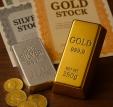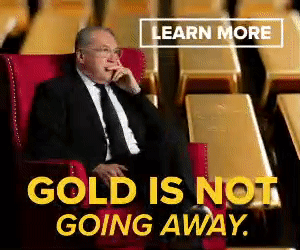Gold poised for new highs by year-end as economic uncertainty supports bullish outlook - Capitalight’s Schieven
NEW YORK (June 10) The gold market may be caught in a holding pattern through the summer, but its ability to maintain critical support at elevated levels suggests that it’s only a matter of time before it retests April’s all-time highs, according to one market strategist.
In a recent interview with Kitco News, Chantelle Schieven, Managing Director at Capitalight Research, said it could be difficult for gold to reach new highs as the U.S. economy and labor market remain fairly resilient. She also noted that inflation pressures, while elevated, remain relatively contained—for now.
Schieven explained that U.S. consumers and the broader economy have been sustained by surplus inventories built up earlier in the year as companies braced for President Donald Trump’s ongoing global trade war.
However, she added that these inventories are quickly being depleted, meaning consumers will soon start to feel the effects of higher tariffs.
“We have seen some price creep in the economy, but I expect it will take six months before we feel the full effect of these tariffs,” she said. “You can see that in consumer inflation expectations, which have risen over 6% for the next 12 months.”
In addition to higher inflation, Schieven said she expects the economic uncertainty driven by geopolitical chaos to weigh on growth through the second half of the year.
While she is not forecasting a recession, Schieven anticipates a stagflationary environment—characterized by stagnant growth and persistent inflation—that should support gold for the next two years.
“Right now, businesses don’t want to invest in new production because they don’t know what trade policies will look like. There is no major capex spending happening, so what will this economy look like in two years? In this environment, it's difficult to see significant downside for gold,” she said. “ I am actually pleasantly surprised by how well it is holding up.”
Although gold remains in a long-term bullish uptrend, investors still need to navigate ongoing volatility. Schieven noted that a major factor holding gold back is the Federal Reserve’s continued neutral stance on monetary policy.
While the inflation threat is keeping the Fed on the sidelines, Schieven said that once the labor market starts to weaken and growth slows, the central bank will be forced to cut rates.
“I don’t see inflation returning to 6%, but I think we could see it comfortably above 3.5%. And if the U.S. unemployment rate rises to 5%, the Fed would have no choice but to cut interest rates,” she said. “In that scenario, I would expect gold prices to retest their all-time highs.”
However, Schieven added that gold doesn’t necessarily need a rate cut from the Federal Reserve to move higher. She explained that an expansion of the central bank’s balance sheet would also support gold.
“We may not see the Federal Reserve cut rates this year, but let’s not forget that they have a lot of backdoor policies. They could easily start increasing their balance sheet again and buying the long end of the bond market,” she said. “I think any type of easing from them in the next few months would be a good sign for gold.”
Speculation about the Federal Reserve’s quantitative easing policies has grown in recent months due to elevated volatility in bond markets. Concerns over U.S. government debt and unsustainable spending have led investors to question the reliability of government bonds. If yields continue to rise, the Fed could be forced to act as the buyer of last resort to bring them back down.
Schieven said she doesn’t believe higher yields indicate a complete loss of faith in the U.S.; rather, given rising debt levels, investors now demand higher returns to compensate for increasing risk. She also emphasized that there is a ceiling to how high yields can go, as the government cannot sustain higher borrowing costs.
In the meantime, as investors pull back from government bonds, Schieven said gold remains the last safe-haven asset standing. Even at current prices, gold is still an attractive investment, she added.
“Gold only looks expensive if you think it’s going to go down—and we just don’t see that,” she said. “A lot would have to happen to bring gold prices back down to even $2,700 an ounce, where they were at the start of 2025. There are many factors that have fundamentally changed in the marketplace, and these will help keep gold prices elevated.”
KitcoNews











